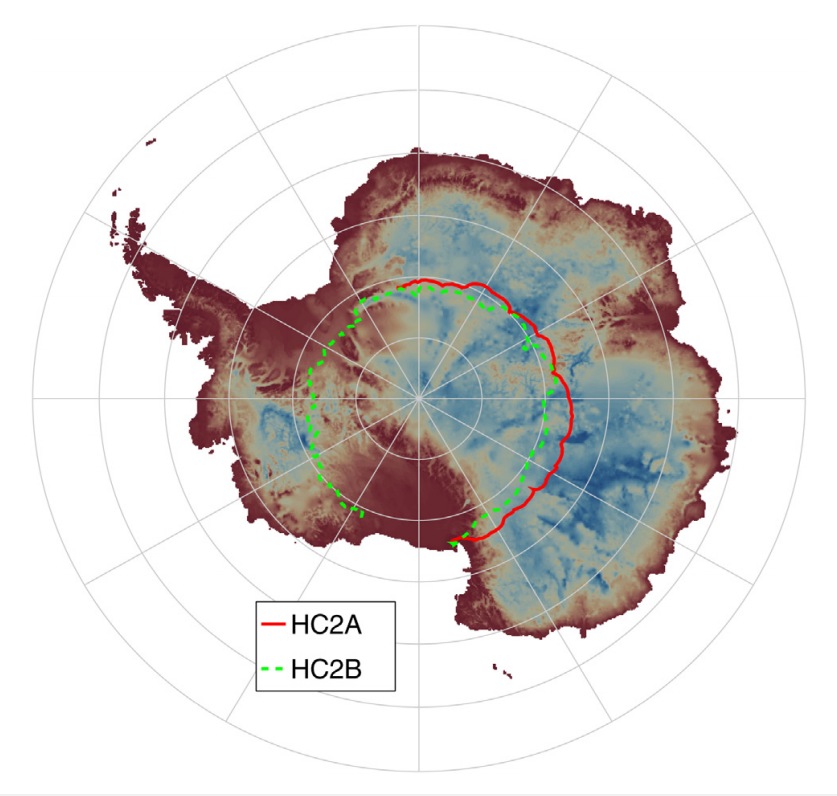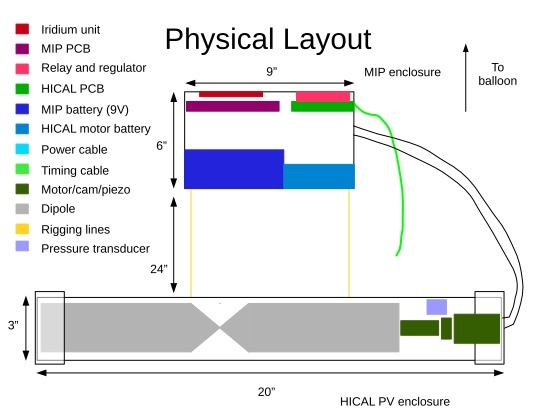Purpose of the flight and payload description
The ANITA HiCal (High-altitude Calibration) balloon-borne transmitter is a calibration pulsing unit that emulates the radio signals produced by ultra-high energy cosmic rays (HECR). The instrument, developed by a team from the University of Kansas, is a complementary project of the ANtarctic Impulsive Transient Antenna (ANITA) project, which surveys by means of a special balloon-borne receiver the Antarctic ice looking for radio signals produced by ultra-high energy (UHE) neutrinos and cosmic rays. The HiCal payload is launched on a second balloon in conjunction with ANITA, with the objective of transmitting pulses that would be received by ANITA both directly and as signals re?ected from the ice surface. A ratio of the amplitudes of re?ected to direct signals would provide a direct measurement of any decoherence effects caused by surface roughness.
The HiCal-1 transmitter is based on a small ceramic piezo-electric which translate the mechanical energy of impact of a solid "actuator" with a piezo ceramic into a ~10 nanosecond-duration burst of electrical energy, and are capable of generating kiloVolt-scale radio-frequency signals. It also incorporates a "Micro-Instrumentation Package" or MIP which is a standard unit for NASA balloon missions, containing hardware for communications, telemetry, and GPS time and location information of the payload. Below the MIP, the "actuator" comprises a motor turning at a rep rate of approximately 0.33 Hz which drives a camshaft, designed to depress the spring-loaded piezo electric at the same 0.33 Hz frequency. Signals from the piezo are directed into a dipole antenna. A dedicated pressure vessel, constructed from lightweight ABS (Acrylonitrile-Butadiene-Styrene), was built to enclose the dipole and piezo in a sealed, 1000 mB environment. A second GPS board time stamps the RF signals being emitted by the dipole.
Details of the balloon flight

Balloon launched on: 12/12/2016 at 20:15 utc
Launch site: Williams Field, McMurdo Station, Antarctica
Balloon launched by: Columbia Scientific Balloon Facility (CSBF)
Balloon manufacturer/size/composition: Zero Pressure Balloon
Flight identification number: 678N
End of flight (L for landing time, W for last contact, otherwise termination time): 12/18/2016
Balloon flight duration (F: time at float only, otherwise total flight time in d:days / h:hours or m:minutes - ): 5 d 23 h 1 m
Landing site: Payload no recoverable
External references
- HICAL Stephanie Wissel website
- The HiCal 2 Instrument: Calibration and Antarctic Surface Reflectivity Measurement for the ANITA Experiment Nuclear Instruments and Methods in Physics Research Section A: Accelerators, Spectrometers, Detectors and Associated Equipment
- The HiCal 2 Instrument: Calibration and Antarctic Surface Reflectivity Measurement for the ANITA Experiment paper submited to arXiv on 30 Oct 2017
13165If you consider this website interesting or useful, you can help me to keep it up and running with a small donation to cover the operational costs. Just the equivalent of the price of a cup of coffee helps a lot.


